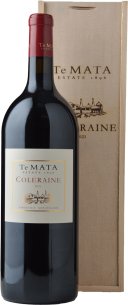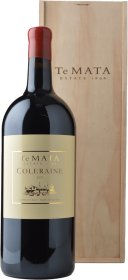Château Palmer Margaux
Château Palmer is considered one of the worlds first 'Super Seconds' (although actually classified as a third growth), a term relating to the top echelon of producers that fall outside of the ancient 1st Growth classification. Margaux's Château Palmer was named after a British general who fought under Wellington. It has been stated by quite a few wine critics that this could possibly be the finest Château Palmer ever produced. An amazing claim considering how phenomenal the 2005 was and is yet to be. Masses of concentrated aromas and flavours that will keep your senses entertained for hours on end. A truly remarkable achievement that will repay the patient cellarer over the next 30 years.
CHATEAU HAUT BRION 1er cru classe
Chateau Haut Brion is one of the five first Growths of the 1855 Classification of the Medoc. The Chateau was established in 1533 by Jean de Pontac, who was the first to plant vineyards on this prime gravelly site, found in the Graves sub-region of Pessac Leognan. The Chateau is owned today by Prince Robert of Luxembourg, the great grandson of Clarence Dillon. It is planted to Cabernet Sauvignon, Merlot, Cabernet Franc and Petit Verdot, with three hectares planted to the white varieties of Semillon and Sauvignon Blanc. Chateau Haut Brion is the only property outside of the Medoc in the 1855 classification. A wine of class and breed, Chateau Haut Brion is typically more approachable in its youth, showing floral perfume and elegance, yet possesses the structure required for exceptional longevity.
Te Mata Estate Coleraine Cabernet Sauvignon Merlot Cabernet Franc
TE MATA ESTATE Coleraine. Cepage may include Cabernet Sauvignon, Merlot, and Cabernet Franc. Hawkes Bay, New Zealand
Chateau Pavie
Another terrific success for the flagship estate (a 92-acre vineyard situated on the famed limestone and clay-rich slopes of Cote Pavie) of Chantal and Gerard Perse, the 2011 Pavie is composed of 70% Merlot, 20% Cabernet Franc and 10% Cabernet Sauvignon. 2011 may be the biggest, richest, most massive wine of the vintage. With thrilling levels of concentration, tremendous purity, high but sweet tannin, a skyscraper-like mouthfeel, and terrific intensity, depth and palate presence, this larger-than-life effort will require 5-8 years of cellaring, and should age effortlessly over the following 25-30 years.
Château Léoville Las Cases
Chateau Pichon Lalande
The history of Chateau Pichon-Longueville Baron is a tale of two estates. The chateau and vineyard known as Pichon Baron was given in dowry to the founders daughter when she married Jacques du Pichon Longueville. After the death of their descendent, the Baron Joseph de Pichon Longueville, in 1850 the estate was again divided - on his deathbed, he gave what became Chateau Pichon Baron to the men of his family, and what became Chateau Pichon Lalande to the women - resulting in, some say, more masculine and sensuous styles of wine respectively! Between the 1960s and the 1980s, the estate went through a period of rather lacklustre production - however, since 1990, they have been producing, according to many, some of the best wines in their history. The 2016 has earned high praise and glowing comparisons to their legendary 1990 Pichon Baron.
Opus One Cabernet Blend
Opus One is the coming together of two of the world's supreme wine figures, Baron Philippe de Rothschild and Robert Mondavi. Opus One began its life in 1979 when Château Mouton Rothschild winemaker Lucien Sionneau and Robert Mondavi's son, Timothy made the partnership's first vintage. Their goal was to create a wine of unparalleled quality that reflected the traditions of both houses. The wine is French in style, but Californian in substance, Opus One is produced with the utmost attention to detail. The 2006 Opus One is a traditional Bordeaux style blend of Cabernet Sauvignon, Merlot, Cabernet Franc, Petit Verdot and Malbec. The wine shows saturated black fruit concentration with flecks of purple in the glass. The nose is one of dark chocolate, blackberry, smallgoods and rose petal. In the mouth, flavours of cassis and coffee with robust plum and cherry are only a small taste of how great this wine will become with careful cellaring.</p>
Château Montrose Saint-Estèphe
Château Ducru-Beaucaillou St-Julien
Reputed to be the leading star of the ''Super Seconds'' of Bordeuax, Chateau Ducru-Beaucaillou is set over 50 hectares of vineyards in the south of St-Julien. The wine is composed from predominately Cabernet Sauvignon and Merlot, with lesser influence from Cabernet Franc and Petit Verdot and spends around 18 months in half new and half seasoned oak barriques. The 2010 vintage has conspired to produce what could arguably called one of the greatest releases of this wine, resplendent with fine, firm tannin, subtle oak, quiet power and a capacity to cellar for another half century.
Cullen Wines Vanya Cabernet Sauvignon
Named in honour of Vanya Cullens passionate and inspired efforts as a dedicated winemaker and celebrating her love of Cabernet, the Vanya is the ultimate expression of Cullens style - this is Cabernet manifest.


























